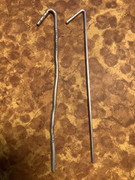signalmankenneth
Verified User
I have been noticing this for years now, coffee is a good example?!!
Inflation has raised store prices, but it's not the only way consumers are losing money. Learn how producers hide cost increases with shrinkflation.
Inflation in the US has caused dramatic increases in the prices of food, gas and other consumer products in 2022. While higher prices make for big headlines, there's another way that consumers are losing money -- smaller packaging of their favorite products.
"Shrinkflation," or package downsizing, has been a standard practice in the food industry for decades. Companies reduce items in size or quantity while keeping the same prices.
Consumers are more attuned to cost than package size, which affects their shopping decisions less than price. You might notice when the cost of your cat treats goes up a dollar, but do you notice when the amount of treats shrinks?
Shoppers across the US have recently reported smaller sizes for toilet paper, cookies, chips and other common grocery products. Read on to learn more about shrinkflation and how to track it, including a list of all the products that have downsized recently.
For further reading, learn why inflation continues to rise, how to save money on gas, and 16 ways to save on food, travel and more.
https://www.cnet.com/personal-finan...eat-thins-why-are-grocery-products-shrinking/


Inflation has raised store prices, but it's not the only way consumers are losing money. Learn how producers hide cost increases with shrinkflation.
Inflation in the US has caused dramatic increases in the prices of food, gas and other consumer products in 2022. While higher prices make for big headlines, there's another way that consumers are losing money -- smaller packaging of their favorite products.
"Shrinkflation," or package downsizing, has been a standard practice in the food industry for decades. Companies reduce items in size or quantity while keeping the same prices.
Consumers are more attuned to cost than package size, which affects their shopping decisions less than price. You might notice when the cost of your cat treats goes up a dollar, but do you notice when the amount of treats shrinks?
Shoppers across the US have recently reported smaller sizes for toilet paper, cookies, chips and other common grocery products. Read on to learn more about shrinkflation and how to track it, including a list of all the products that have downsized recently.
For further reading, learn why inflation continues to rise, how to save money on gas, and 16 ways to save on food, travel and more.
https://www.cnet.com/personal-finan...eat-thins-why-are-grocery-products-shrinking/



